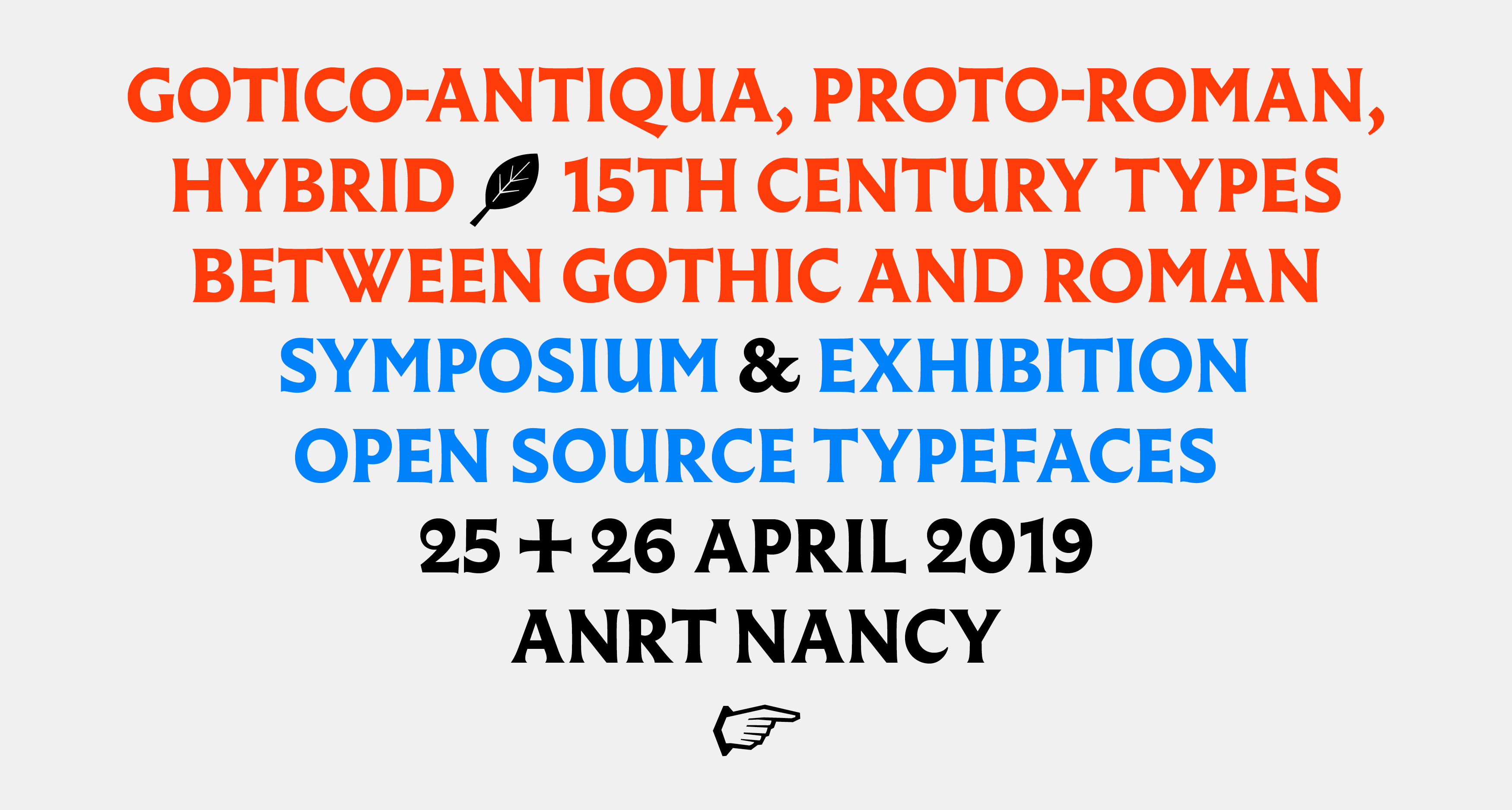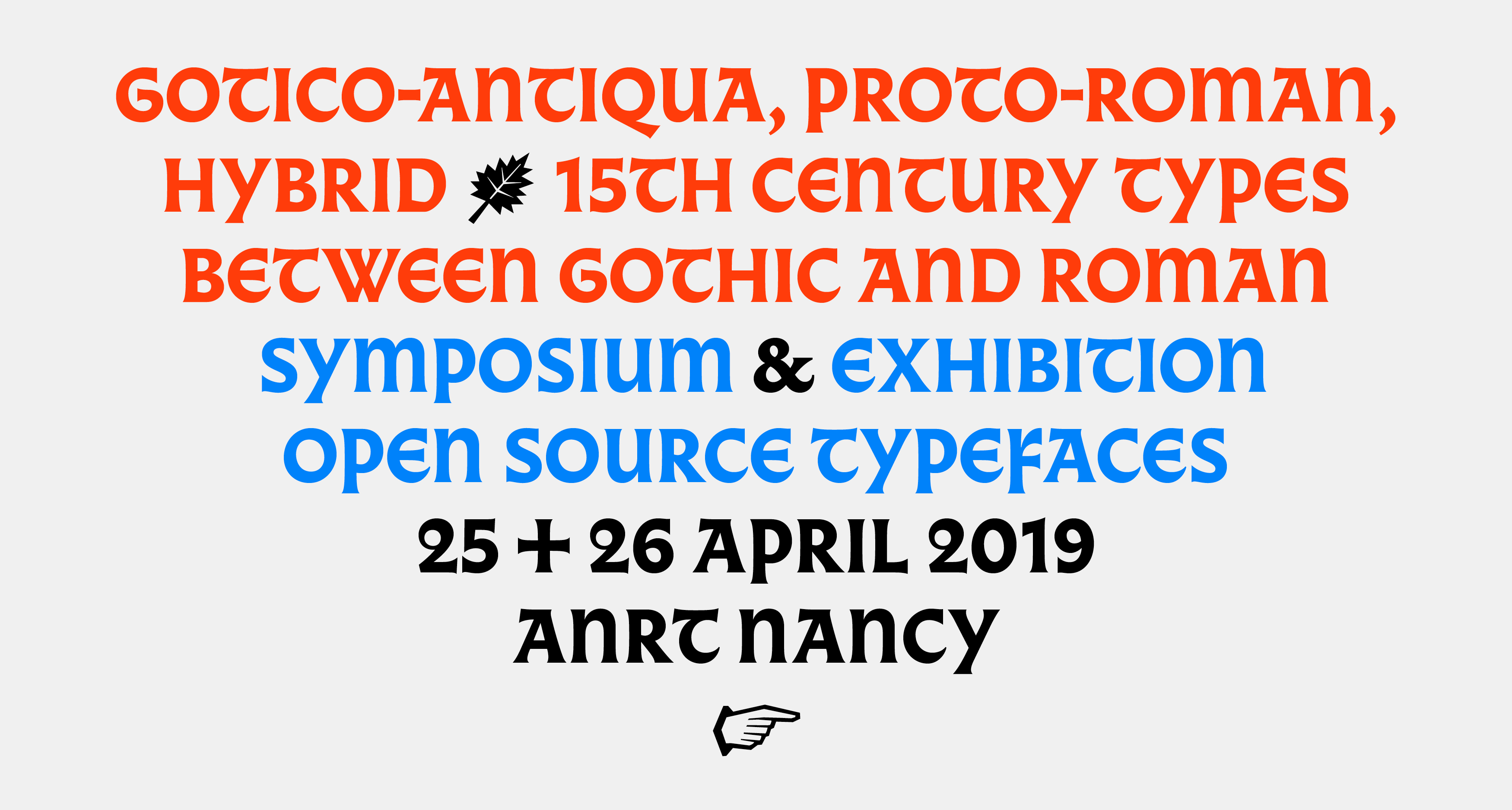Gotico-Antiqua
Nancy, April 25-26th, 2019 zoomTwo-days Symposium, April 25-26th, 2019. ENSAD Nancy
With Olivier Deloignon, Marc Smith, Riccardo Olocco, Martina Meier, Oliver Duntze, Nikolaus Weichselbaumer, Alexis Faudot & Rafael Ribas, Jérôme Knebusch, Dan Reynolds, Christopher Burke, James Mosley, Ferdinand Ulrich.
Comité scientifique: Lotte Hellinga, Riccardo Olocco, Marc Smith, Thomas Huot-Marchand & Jérôme Knebusch.
«The most important change in typography occurred in the fifteenth century. […] It is unbelievable for me, that in the same century, in a very short period of time, an evolution arose from strict gothic to modern roman type. It always remained a mystery to me.» Adrian Frutiger, in Ein Leben, film by Sebastian Rohner, 2011.
The symposium and the exhibition Gotico-Antiqua, Proto-Roman, Hybrid. 15th century types between gothic and roman are based on a current research programme developed between 2016 and 2019, which investigates the period 1459-1482. The symposium aims to bring together researchers from the fields of typography, palaeography and incunabula studies, with a particular focus on type and letterforms. This relatively understudied period – after Gutenberg and before the consolidation of Jenson’s model – extends from the earliest traces of ‘humanistic’ tendencies to ‘pure’ roman, including many cases of uncertain or experimental design, voluntary hybridisation and proto- or archaic roman. In 1459 in Mainz, Johann Fust and Peter Schöffer printed the Rationale Divinorum Officiorum by Guillaume Durand, using a typeface (now known as ‘Durandus’) that looked like no other before. From that point, we can follow a wide variety of developments, partly related to the travels of early printers from the Rhine area to Italy and France. By extension, we are also interested in the Private Press movement initiated by William Morris and Emery Walker at the end of the nineteenth century in England, which revived some of those typefaces before they were once more largely forgotten.



